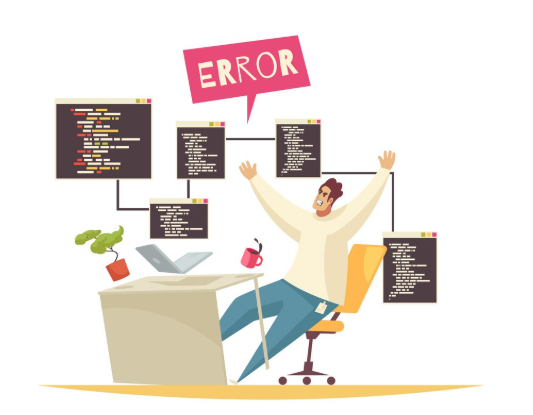
No-code platforms enable businesses to build SaaS applications quickly without deep technical expertise. However, scalability remains a critical challenge as demands grow. A scalable SaaS architecture for no-code platforms relies on modular design, cloud-based infrastructure, and integration of microservices to ensure performance and flexibility under increasing loads.
By adopting best practices such as separating backend services, optimizing resource allocation, and leveraging serverless technologies, no-code applications can handle more users and data effectively. This approach not only supports growth but also helps maintain security and cost-efficiency as the platform scales.
Understanding how to structure no-code SaaS architectures allows developers and business owners to avoid common bottlenecks. With the right strategy, no-code solutions can compete with custom-built systems in terms of scalability and reliability.
Core Principles of Scalable SaaS Architecture
A scalable SaaS architecture must support seamless growth, ensure efficient resource use, and maintain robust performance and security. Achieving this requires careful design choices in tenancy, modularity, and integration.
Multi-Tenancy Models
Multi-tenancy enables multiple customers to share the same application and infrastructure while keeping their data isolated. There are three main models: shared database with shared schema, shared database with separate schemas, and separate databases per tenant.
Choosing the right model impacts performance, security, and scalability. For no-code platforms aiming for professional-grade quality, a shared database with separate schemas balances cost and isolation effectively. Separate databases per tenant offer stronger isolation but increase management complexity and infrastructure costs.
A production-ready app must implement strict data partitioning and encryption within the chosen model. This ensures compliance with data protection standards while supporting scalable infrastructure growth as the customer base expands.
Microservices and Modular Design
Microservices split the application into independent services that focus on specific functions. This modular design allows no-code platforms to deploy updates without downtime and scale individual components based on demand.
Loose coupling between services is critical for resilience and fault tolerance. Each microservice should handle its own data and logic, minimizing direct dependencies. This supports scalability as components can run on separate servers or containers, optimizing resource allocation.
A professional-grade scalable infrastructure relies on monitoring and orchestration tools to manage microservices efficiently. This design enables continuous delivery and quick adaptation to user growth or feature expansion.
API-First Integration Strategies
API-first design ensures the platform’s core features and data are accessible via well-defined, versioned APIs. This approach supports extensibility and integration with external systems, critical for no-code platforms that serve diverse business needs.
Clear API documentation and consistent standards reduce integration errors and speed up development for third-party apps and plugins. An API-first strategy also promotes reusability across services, saving development time and enabling scalable maintenance.
For a production-ready app, enforcing authentication, rate limiting, and monitoring on APIs is essential to protect resources and maintain performance under load. This supports a scalable infrastructure capable of handling increasing API requests securely.
Unique Challenges of No-Code SaaS Platforms
No-code SaaS platforms offer simplicity and accessibility but face specific hurdles in customization, performance, and security. These challenges affect solo makers, founders, and small agencies aiming to build scalable, user-driven products without traditional coding.
User-Centric Customization
No-code platforms focus on zero-code needed solutions, empowering users to describe their ideas without programming skills. However, this ease limits deep customization and control over unique features. Founders and small agencies often hit a ceiling when platform templates cannot fully match complex or niche requirements.
The restriction arises from predefined components that prioritize broad usability over specialized needs. Users may struggle to implement advanced workflows or integrations without workarounds. This lack of flexibility can hinder product differentiation in competitive markets.
Therefore, balancing simplicity with meaningful customization remains a key challenge for no-code SaaS builders seeking scalable, user-centric solutions.
Ensuring Performance for Diverse Applications
Performance variability is a notable issue. Many no-code applications perform well with simple, standard use but may slow down as complexity or user volume grows. This affects solo makers and small teams who need scalability without extensive developer resources.
Underlying infrastructure often cannot be fully optimized by users, limiting control over resource allocation. Heavy automation or data processing can lead to bottlenecks, impacting user experience.
To manage this, platform users must carefully plan workflows and monitor limits. Awareness of performance trade-offs is critical when building SaaS products expected to handle diverse and expanding workloads.
Security for Non-Technical Users
Security presents unique challenges since many no-code users lack in-depth technical knowledge. Founders and small agencies might not fully understand risks around data privacy, access control, or compliance with regulations.
No-code platforms handle much of the security backend, but insufficient user awareness can result in misconfigurations or oversights. For example, improper permission settings or exposure of sensitive data can occur.
Platforms must provide clear, easy-to-follow security controls and best practices. Educating users about vendor lock-in and potential vulnerabilities is essential to protect both the product and its users.
Leveraging AI for No-Code Platform Architecture
AI enhances no-code platform architecture by automating complex tasks, improving design accuracy, and optimizing user experiences. It transforms how applications are built, enabling faster iteration and better scalability.
AI-Generated Application Blueprints
AI-generated blueprints automate the initial steps of app development by creating detailed frameworks based on predefined startup playbooks and user requirements. These blueprints act as a scaffold, outlining data models, API interactions, and UI components without manual coding.
This approach accelerates project kickoff and reduces errors from early-stage design. By incorporating design thinking principles, AI aligns functional needs with user expectations, improving usability and adaptability. Developers can customize and scale these initial blueprints, which helps maintain flexibility across different SaaS use cases.
Automated Feature Planning
AI-driven feature planning analyzes market trends, customer feedback, and usage data to prioritize the most valuable functionalities. It helps teams decide which features to build first, aligning with business goals and technical feasibility.
This automation reduces guesswork common in manual planning processes and keeps the product roadmap focused. The system can update priorities dynamically as new data arrives, ensuring adaptability during rapid development cycles. Automated planning also supports resource allocation and risk assessment, making it easier to manage projects with lean or solo teams.
Streamlining User Flow with Machine Learning
Machine learning models track user behavior in real time, identifying friction points and suggesting optimized navigation paths. This continuous feedback loop allows no-code platforms to adapt interfaces and workflows automatically, improving overall user retention and satisfaction.
Such dynamic user flow optimization is essential for scalable SaaS products that serve diverse user bases. It fits within design thinking frameworks by iterating on user feedback and refining interactions to simplify complexity. This reduces manual UX adjustments and helps platforms remain responsive to evolving user needs.
Automated Deployment and Scalability Solutions
Automated deployment and scalability are critical for no-code platforms to maintain performance during traffic spikes and growth. Leveraging tools that streamline deployment while integrating with scalable infrastructure ensures stability and quick adaptation to load changes.
One-Click Build and Deployment
One-click build and deployment tools simplify releasing new features or updates without manual intervention. These tools often integrate directly with platforms like Vercel, AWS, or GCP to automate build pipelines, testing, and deployment.
This automation reduces human error and speeds up the release cycle. It allows developers and non-technical users alike to push changes reliably with minimal downtime.
By connecting version control systems with automated workflows, one-click deployment supports continuous integration and continuous delivery (CI/CD). This keeps the SaaS system updated while maintaining performance under increased load.
Seamless Scaling Across Cloud Providers
Seamlessly scaling across cloud providers like AWS and GCP reduces dependency on a single infrastructure provider and improves resilience. It involves using scalable infrastructure components such as serverless functions, auto-scaling groups, and container orchestration.
No-code platforms benefit from automated scaling features that adjust resources based on real-time traffic patterns. For example, during traffic spikes, infrastructure can dynamically allocate more compute power without manual input.
Multi-cloud strategies can increase availability and reduce latency by routing traffic through provider regions closest to users. Automated monitoring tools track resource usage and trigger scaling actions before performance degradation occurs.
Security and Compliance Integration
Security and compliance are critical components when designing scalable SaaS architectures on no-code platforms. Ensuring robust security mechanisms and adherence to regulatory standards allows organizations to protect data effectively while meeting industry mandates.
Built-In Security Checks
No-code platforms often include automated security checks that monitor for vulnerabilities during development and deployment. These checks typically cover access controls, data encryption, and authentication protocols, minimizing risk from misconfiguration or user error.
For example, many platforms integrate multi-factor authentication (MFA) and role-based access controls (RBAC) by default. This reduces the attack surface and enforces least privilege principles.
Regular vulnerability scans and patching routines are automated to maintain system integrity. These built-in checks help businesses comply with stringent requirements such as SOC 2 by demonstrating continuous security monitoring and incident response capabilities.
Maintaining Compliance Standards
Compliance frameworks like GDPR and SOC 2 impose strict data privacy and security controls that no-code SaaS solutions must respect. Maintaining compliance requires systematic data handling practices within the platform architecture.
This includes data residency controls, encryption of data in transit and at rest, and audit logging to provide transparency. Platforms also support data subject rights management, such as access, correction, and deletion requests, essential for GDPR compliance.
Regular assessments and documentation are necessary to verify ongoing compliance. Integrating compliance controls into the no-code environment simplifies audits and reduces the risk of non-compliance penalties.
Expert Support and Human Oversight
Scalable no-code SaaS platforms benefit from a combination of automated systems and expert human input. Reliable access to experienced professionals and a balance of manual and automated quality checks ensure performance, security, and stability as the platform grows.
Access to Senior Engineers
Senior engineers provide critical expertise, especially when no-code platforms encounter complex challenges beyond standard automation. Their involvement is essential for architectural decisions, integrating advanced features, and resolving issues that require deep technical insight.
They act as an expert backup for teams with limited coding skills, guiding scalability improvements and performance tuning. This reduces risks associated with rapid growth and complex workflows. Having a senior engineer available can also accelerate troubleshooting and minimize downtime.
Platforms that integrate expert support typically offer structured escalation paths, ensuring that critical problems receive timely, knowledgeable attention. This builds confidence in the platform’s ability to handle evolving business needs.
Hybrid Automated and Manual Quality Assurance
Quality assurance on no-code platforms requires a hybrid approach. Automated testing covers routine checks like interface functionality, workflow logic, and performance metrics.
Manual QA provided by experts is necessary to catch nuanced errors, security risks, and usability concerns that automation may miss. Expert human oversight evaluates edge cases and assesses the impact of updates in real-world scenarios.
Combining these methods creates layered validation, improving reliability and user experience. It ensures that the SaaS product remains stable and secure as new features and integrations scale with demand.
This hybrid model supports compliance with industry standards and customer expectations by continuously monitoring and refining platform quality.
Analytics, Monitoring, and Performance Optimization
Effective analytics, monitoring, and performance tuning are vital to sustaining a scalable no-code SaaS platform. These practices ensure the platform remains responsive and reliable during increasing user demand while providing actionable insights to drive growth.
Real-Time Analytics Dashboards
Real-time analytics dashboards offer immediate visibility into user behavior, system performance, and business metrics. For no-code platforms, embedding these dashboards with minimal latency is crucial to empower teams without extensive coding.
Key features include customizable widgets, live data feeds, and drill-down capabilities to analyze usage patterns quickly. Dashboards should integrate seamlessly with the production-ready app environment, supporting data security and compliance standards.
Visualizing trends and anomalies in real time helps identify issues before they impact users. This proactive insight also supports faster decision-making and iterative product improvements.
Monitoring App Health at Scale
Monitoring app health involves tracking system metrics such as uptime, response times, error rates, and resource consumption. At scale, automated alerts and anomaly detection become essential to maintain smooth operation.
Implementing distributed tracing and log aggregation tools enables detailed visibility into complex workflows within no-code SaaS platforms. This helps engineers pinpoint bottlenecks or failures even as user traffic fluctuates heavily.
Regular health checks combined with capacity planning ensure the production-ready app can sustain load increases without degradation. Monitoring also supports security by flagging unusual activity or unauthorized access attempts.
Optimization for User Growth
Optimizing a no-code SaaS platform for user growth requires balancing resource allocation with cost efficiency. This involves scaling infrastructure components dynamically based on usage metrics collected via analytics and monitoring tools.
Performance tuning includes database query optimization, caching strategies, and load balancing across application servers. Improving front-end responsiveness by reducing asset sizes and leveraging CDN delivery enhances the user experience under heavy load.
Additionally, incremental deployment pipelines allow testing performance impacts of new features with a subset of users. This limits risk while maintaining a stable production-ready app that scales smoothly.
Pricing Models and User Onboarding
Successful scalable SaaS platforms rely on clear pricing models and streamlined onboarding to attract and retain users. Transparent pricing structures combined with a tailored onboarding process for different user types, such as founders and agencies, are key to achieving this.
Transparent App Pricing Structures
Clear and straightforward pricing is essential for no-code platforms. Most use tiered paid plans, often structured around user limits, feature access, or usage. This model helps customers easily understand what they pay for and scale as their needs grow.
Offering beta access or a private beta with exclusive features can attract early adopters while managing demand through a waitlist. This approach creates controlled growth and refines pricing based on real user feedback before full public launch.
Highlighting price transparency — including what each tier offers — reduces confusion and supports smoother decision-making. Details on support, integrations, or limits should be clearly stated to avoid unexpected charges.
Onboarding Process for Founders and Agencies
No-code platforms serving founders and agencies benefit from distinct onboarding flows. Founders usually require fast, guided setups emphasizing quick prototyping, while agencies often need multi-user team features and collaboration tools.
A typical onboarding starts with personalized walkthroughs or tooltips tailored to user roles. Integration with common project management or analytics tools can be enabled early to increase platform stickiness.
Offering phased access via beta programs or invitations allows these users to test premium capabilities. It helps identify specific friction points and optimize onboarding flows before scaling to a broader audience.
Tracking user behavior during onboarding facilitates ongoing improvements. Clear milestones communicated throughout encourage completion and user confidence.
Use Cases and Market Fit for No-Code SaaS Tools
No-code SaaS tools are particularly suited for scenarios requiring fast iteration and management of distinct projects. They empower users with limited technical skills to launch functional solutions while enabling agencies to handle multiple clients efficiently.
Rapid MVP Development for Startups
No-code platforms enable founders and solo makers to build Minimum Viable Products (MVPs) quickly without writing code. This accelerates market testing by reducing development time from months to weeks or days.
Founders benefit from pre-built templates and visual workflows that allow rapid adjustments based on user feedback. This iterative approach helps validate business ideas before investing in custom software development.
These platforms support scalability to some extent but are best suited for early-stage SaaS products. They minimize upfront costs, allowing startups to allocate resources to marketing and customer acquisition instead of complex engineering.
Agency and Client Project Management
Agencies use no-code tools to manage multiple client projects efficiently using modular components and drag-and-drop interfaces. This reduces reliance on developers and shortens delivery timelines.
No-code SaaS platforms help agencies deliver customized solutions tailored to each client’s needs without extensive coding. They can replicate workflows across projects, improving consistency and reducing errors.
This approach is cost-effective and scalable for agencies managing numerous clients simultaneously. It offers flexibility in project updates and integration with other business tools crucial for smooth operations.





